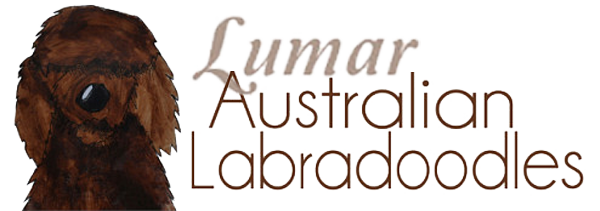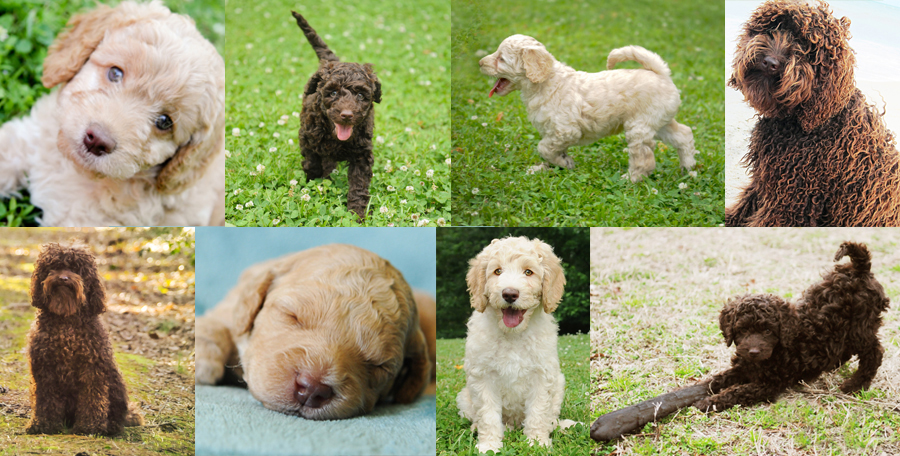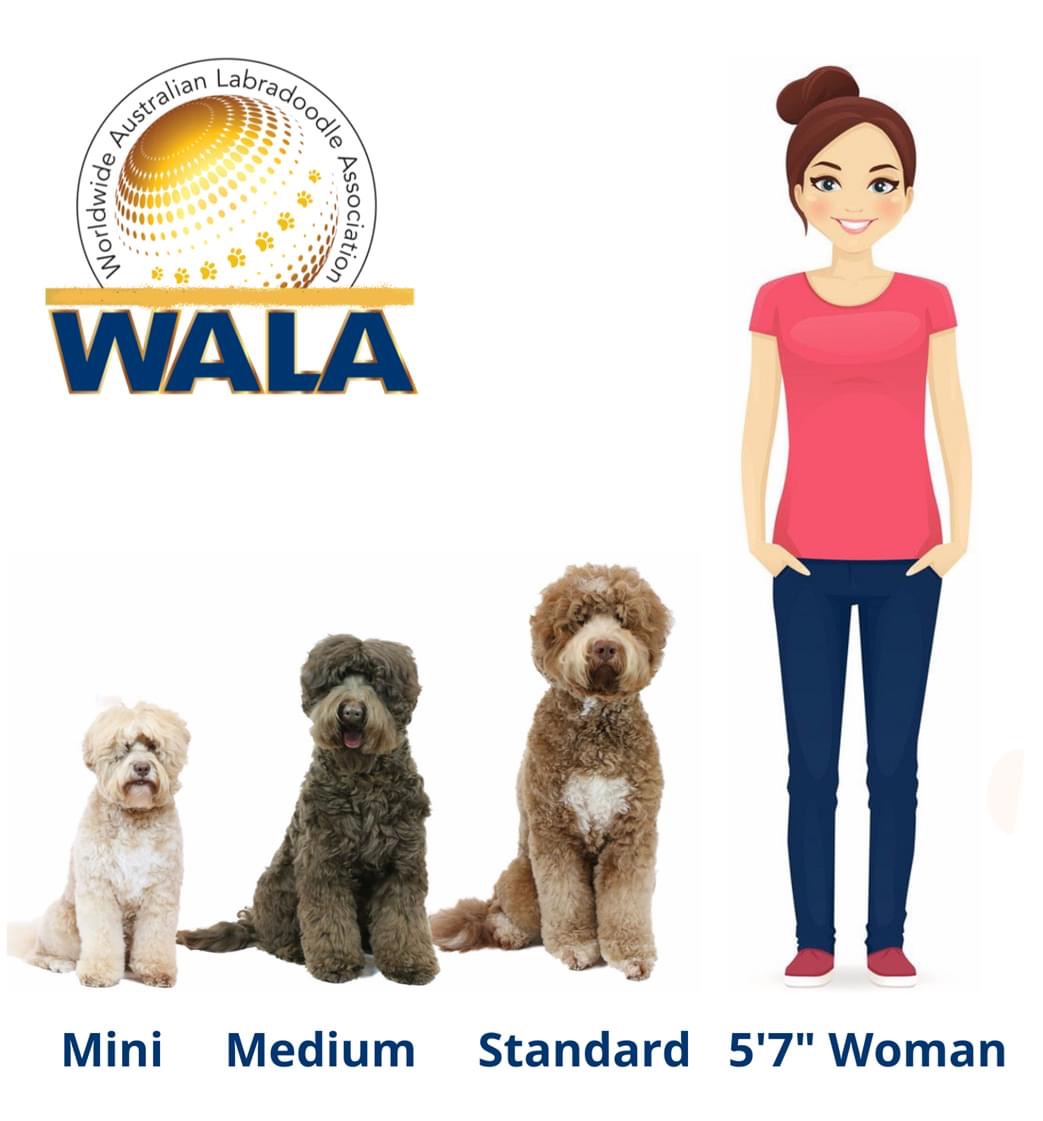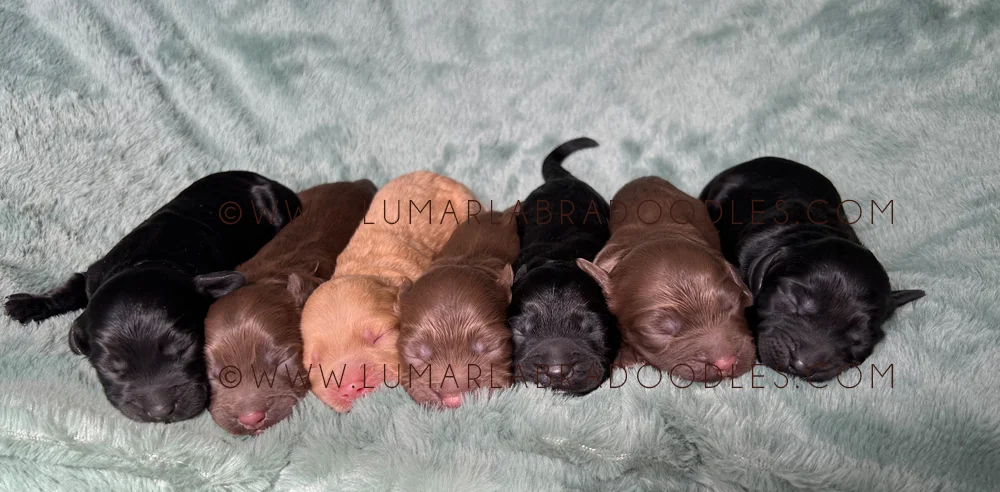About Australian Labradoodles
The Multigenerational Australian Labradoodle is different from all other labradoodles!
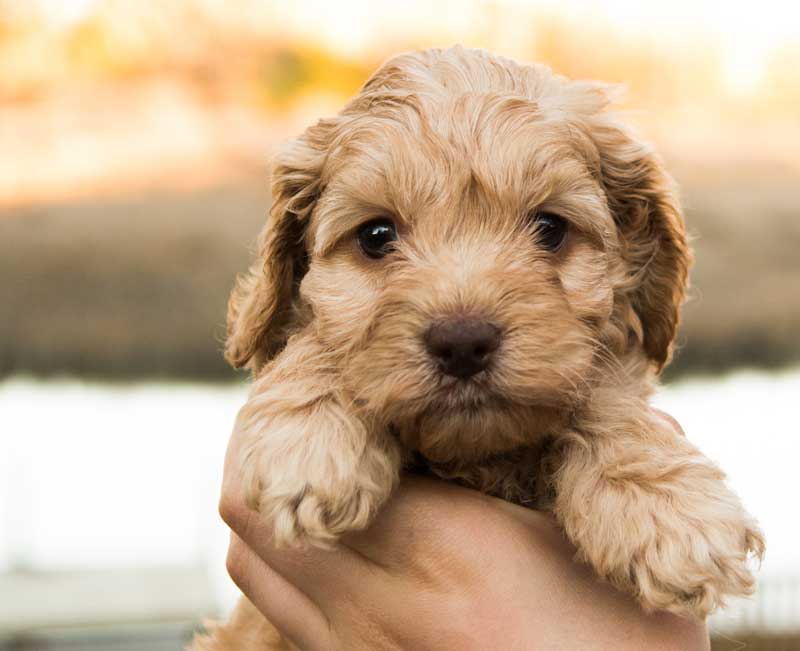 Australian Labradoodles are sociable, intuitive, and friendly, which makes them PERFECT family pets! Gentle and loving, they are eager to please and are thus well suited as guide dogs, therapy dogs, and assistance dogs. With 99% hypo-allergenic coats, Australian Labradoodles are often the perfect fit for people who have not been able to own a pet because of their allergies.
Australian Labradoodles are sociable, intuitive, and friendly, which makes them PERFECT family pets! Gentle and loving, they are eager to please and are thus well suited as guide dogs, therapy dogs, and assistance dogs. With 99% hypo-allergenic coats, Australian Labradoodles are often the perfect fit for people who have not been able to own a pet because of their allergies.
While often thought of as a Lab-Poodle mix, Australian Labradoodles are far more complex and have a much richer history.
In the 1980’s, Tegan Park and Rutland Manor in Australia, the two founders of the Australian Labradoodle, began carefully infusing several other breeds into early generations of their Lab/Poodle crosses. The goal was to improve temperament, coat, conformation, and size. The infused breeds include Irish Water Spaniel as well as the American and English Cocker Spaniel. The resulting labradoodles subsequently have been bred to each other, continuing the multi-generational tradition. This provides a dog that is not a “cross” or “mix” of other breeds, but rather is a breed all its own. The resulting puppies are therefore consistent and predictable.
We breed pure Multigenerational Australian Labradoodles from quality bloodlines. The bloodlines of our dogs originate with Tegan Park and Rutland Manor in Australia.
Labradoodles Today
Today, Australian Labradoodles are wonderful, intelligent dogs with lush coats that are more reliably low to non-shedding and allergy friendly than other types of labradoodles such as first generation Lab/Poodle crosses, or first generation crosses bred back to Poodles. Even when the other types of Labradoodles are bred on for generations, the result is not an Australian Labradoodle, as the attributes of the infused breeds were not included in their ancestry.
The Breed Standard
Temperament
Size
- Between 14 and 24 inches (35 to 63 centimeters) in height at wither, but not more than 25 inches. Weighs between 15 and 65 pounds (7 to 30 kilograms).
- At this stage in the breed’s development, the Australian Labradoodle comes in three size ranges. Inter-size breeding is acceptable and expected at the moment.
- Miniature range: Between 14 and 16 inches (35 to 42 centimeters) in height at wither, but not more than 17 inches.
- Medium range: Between 17 and 20 inches (43 to 52 centimeters) in height at wither, but not more than 21. Ideal size for a female is 17 to19 inches; for a male, 18 to 20 inches.
- Standard range: Between 21 and 24 inches (53 to 63 centimeters) in height at wither, but not more than 25 inches
Movement
Coat
- Low-to-Non-shedding and easily maintained. Any length is acceptable, but coat generally should not exceed 4 inches. Should be even over the entire body.
- Can appear wavy or straight or form spirals, but should not be too thick or dense, nor should it be fluffy or fuzzy. Should be a single coat; any sign of an undercoat is a serious fault. Ranges between fleece and wool in texture. Extremely harsh hair is highly undesirable.
- Fleece-textured coat is soft in texture, as in the Angora goat. Can have either a straight, wavy look or a soft, spiraling, curly look.
- The wool coat is similar to a lamb’s wool in texture. Should have the appearance of looser, spiraling wool, which parts easily to the skin. Should not appear too dense or too tightly curled..
- Coat should not appear overly groomed. Any appearance of sun bleaching is acceptable.
Head
- Moderately broad with well-defined eyebrows. Stop should be moderate, with eyes set well-apart. Head should be of moderate width, developed but without exaggeration. Foreface should appear shorter than skull.
- Head should be clean-cut and free from fleshy cheeks. The whole head proportionate in size to the rest of the dog.
Eyes
Ears
Mouth
Nose
Neck
Forequarters
Body
Hindquarters
Feet
Tail
Ready to Get Started?
Please note that our adoption process takes time. Not every family that applies will be approved. You can read all the details about the adoption process here.
